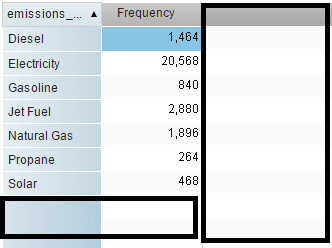The DELETE FROM statement in SQL is used to remove records from a table. Please note that the DELETE FROM command cannot delete any rows of data that would violate FOREIGN KEY or other constraints. Summary: in this tutorial, you will learn how to use the SQL Server DELETE statement to remove one or more rows from a table.
Introduction to SQL Server DELETE statement. To remove one or more rows from a table completely, you use the DELETE statement. DELETE can be used in the body of a user-defined function if the object modified is a table variable.
When you delete a row that contains a FILESTREAM column, you also delete its underlying file system files. The underlying files are removed by the FILESTREAM garbage collector. For more information, see Access FILESTREAM Data with Transact- SQL. Almost all DBMS provide the same syntax for deleting a row from table or databases. Delete a Row in SQL means you are deleting a complete record from your database or table.
Mysql, Oracle and other DBMS provide a delete query that will delete the record. How can I remove a row from database with SQL and. It may not the same as the number of rows specified by the condition in the WHERE clause because the table may contain a BEFORE DELETE trigger that does something else before deletion.
If no row is delete the DELETE statement returns zero. You may want to delete rows because they are no longer neede or they were incorrectly added in the first place. A single DELETE statement can remove a single row , or number of rows. Here is the basic syntax of the DELETE. If you delete the row containing the maximum value for an AUTO_INCREMENT column, the value is not reused for a MyISAM or InnoDB table.
If you delete all rows in the table with DELETE FROM tbl_name (without a WHERE clause) in autocommit mode, the sequence starts over for all storage engines except InnoDB and MyISAM. First, the SQL optimizer will implement different programmatic approaches when we are using TRUNCATE or DELETE. As a result, TRUNCATE delivers the output much quicker than DELETE because it does not need to remove information row by row. Secon auto-increment values are not reset with DELETE. How do you delete an entire row in SQL?
What is drop and delete in SQL? We will use the employees and dependents tables to demonstrate the DELETE statement. Suppose Davi who has employee id 10 wants to remove Fred from his dependent list. We know that Fred has the dependent id 1 so we use the following DELETE statement to remove Fred from the. SQL DELETE statement examples.

This SQL Server tutorial explains how to use the DELETE TOP statement in SQL Server (Transact- SQL ) with syntax and examples. The SQL Server (Transact- SQL ) DELETE TOP statement is used to records from a table in SQL Server and limit the number of records deleted. You can use the WHERE clause with a DELETE query to delete the selected rows, otherwise all the records would be deleted. Then, the DELETE statement deletes all the duplicate rows but keeps only one occurrence of each duplicate group.
SQL Server issued the following message indicating that the duplicate rows have been removed. It becomes more complicated when you want to delete a row in a table that is associated with other rows in another table. For example, each employee is working in one or more territories and each territory has multiple employees. D) Oracle DELETE – delete cascade. In practice, you often delete a row from a table which has a foreign key relationship with rows from other tables.
For example, you want to delete the sales order with id from the orders table and also delete all the line items associated with the order id from the order_items table. Delete Data From a MySQL Table Using MySQLi and PDO.
Nincsenek megjegyzések:
Megjegyzés küldése
Megjegyzés: Megjegyzéseket csak a blog tagjai írhatnak a blogba.